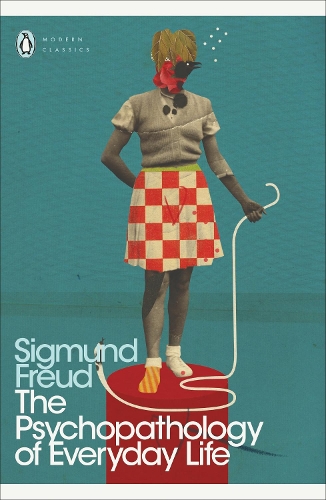
The Psychopathology of Everyday Life
(Paperback)
Publishing Details
The Psychopathology of Everyday Life
By (Author) Sigmund Freud
Introduction by Paul Keegan
Translated by Anthea Bell
Penguin Books Ltd
Penguin Classics
6th August 2002
4th July 2002
United Kingdom
Classifications
General
Non Fiction
150.1952
Physical Properties
Paperback
320
Width 129mm, Height 198mm, Spine 14mm
226g
Description
The most trivial slips of the tongue or pen, Frued believed, can reveal our secret ambitions, money worries and sexual fantasies.The Psychopathology of Everyday Life ranks among his most entertaining and accessible works. Starting with the story of how he once forgot the name of an Italian painter - and how a young acquaintance mangled a quotation from Virgil through fears that his girlfriend might be pregnant - it brings together a treasure trove of muddled memories, inadvertent actions and verbal tangles. Amusing, moving and deeply revealing of the repressed, hypocritical Viennese society of his day, Freud's dazzling interpretations provide the perfect introduction to psychoanalytic thinking in action.
Author Bio
Date- 2004-09-22 Sigmund Freud (1856-1939) was born in Moravia; between the ages of four and eighty-two his home was in Vienna- in 1938 Hitler's invasion of Austria forced him to seek asylum in London, where he died in the following year. His career began with several years of brilliant work on the anatomy and physiology of the nervous system. He was almost thirty when, after a period of study under Charcot in Paris, his interests first turned to psychology, and another ten years of clinical work in Vienna (at first in collaboration with Breuer, an older colleague) saw the birth of his creation, psychoanalysis. Freud's life was uneventful, but his ideas have shaped not only many specialist disciplines, but the whole intellectual climate of the twentieth century. Sigmund Freud was born in 1856 in Moravia; between the ages of four and eighty-two his home was in Vienna- in 1938 Hitler's invasion of Austria forced him to seek asylum in London, where he died in the following year. His career began with several years of brilliant work on the anatomy and physiology of the nervous system. He was almost thirty when, after a period of study under Charcot in Paris, his interests first turned to psychology, and another ten years of clinical work in Vienna (at first in collaboration with Breuer, an older colleague) saw the birth of his creation, psychoanalysis. This began simpl
